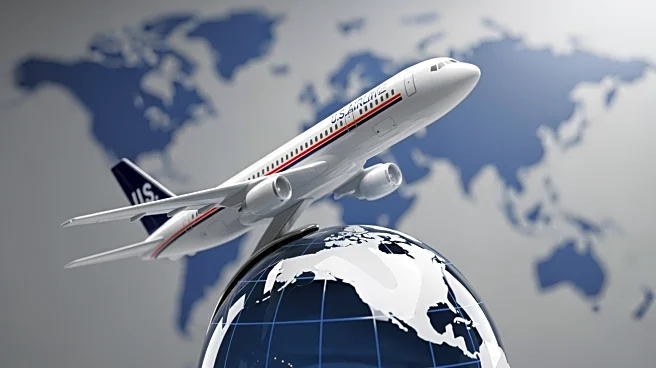What's Happening?
American Airlines has announced the resumption of its non-stop flight service between Budapest and Philadelphia, set to begin in May 2026. This decision follows over a year of preparatory work and marks
a significant step in enhancing transatlantic connectivity. The announcement is part of a broader trend of increased international flight operations, as seen with other airlines launching new routes, such as Etihad's direct flight from Hanoi to Abu Dhabi and Transavia France's connection between Paris Orly and Istanbul's Sabiha Gökçen. Additionally, Budapest Airport is expanding its winter schedule with record seat capacity, aiming to stimulate inbound tourism.
Why It's Important?
The resumption of the Budapest-Philadelphia route by American Airlines is crucial for strengthening economic ties and tourism between Hungary and the United States. It provides a direct link for business travelers and tourists, potentially boosting economic activities in both regions. The move aligns with a broader trend of airlines expanding their international networks, which can lead to increased competition and better services for passengers. This development is particularly significant for Budapest Airport, which is part of the VINCI Airports network, as it seeks to enhance its role as a key transport hub in Europe.
What's Next?
With the resumption of the Budapest-Philadelphia flights, American Airlines is likely to see increased passenger traffic on this route, which could lead to further expansions or additional services in the future. Other airlines may also follow suit, increasing their transatlantic offerings to capitalize on the growing demand for international travel. Airports involved in these new routes, such as Budapest, may invest in infrastructure improvements to accommodate the expected rise in passenger numbers and enhance the overall travel experience.
Beyond the Headlines
The expansion of international flight routes reflects a post-pandemic recovery in the aviation industry, with airlines and airports adapting to new travel patterns and demands. This trend may lead to long-term shifts in global travel dynamics, with more emphasis on direct connections between major cities. Additionally, the increased connectivity can foster cultural exchanges and international collaborations, contributing to a more interconnected global community.












